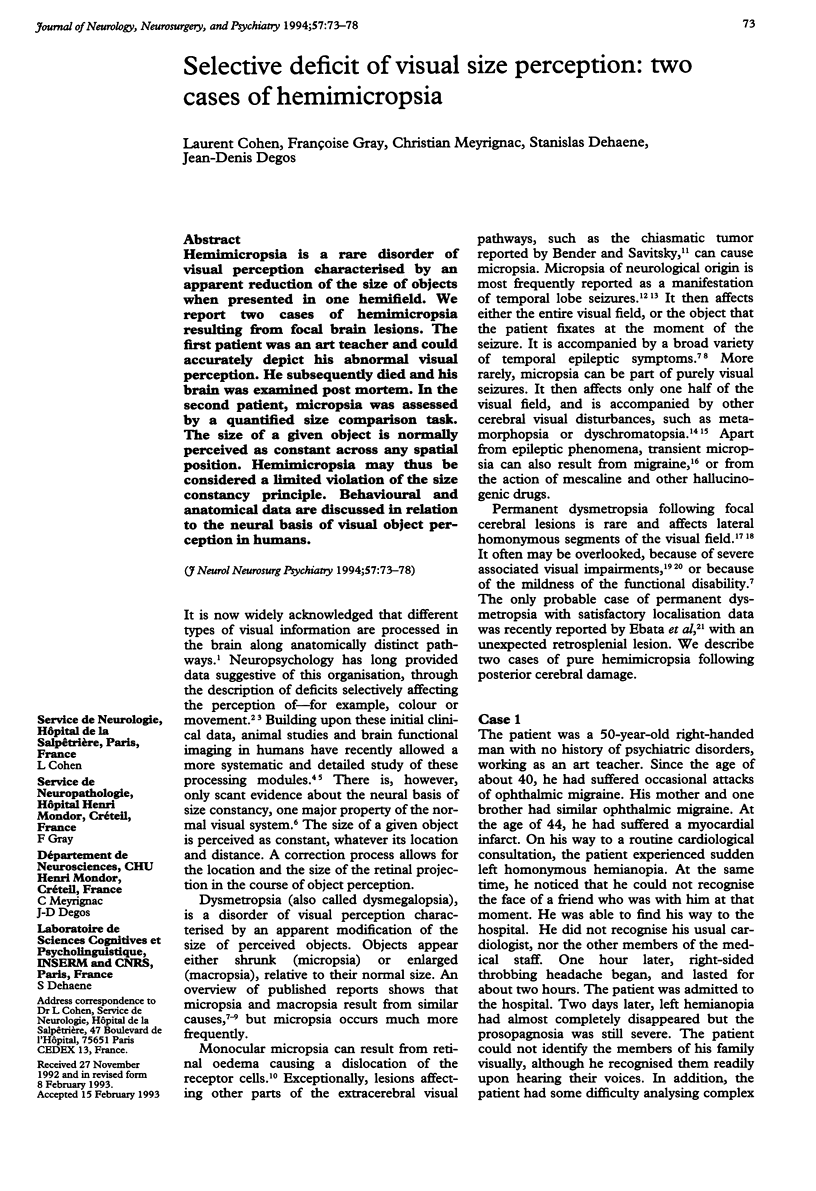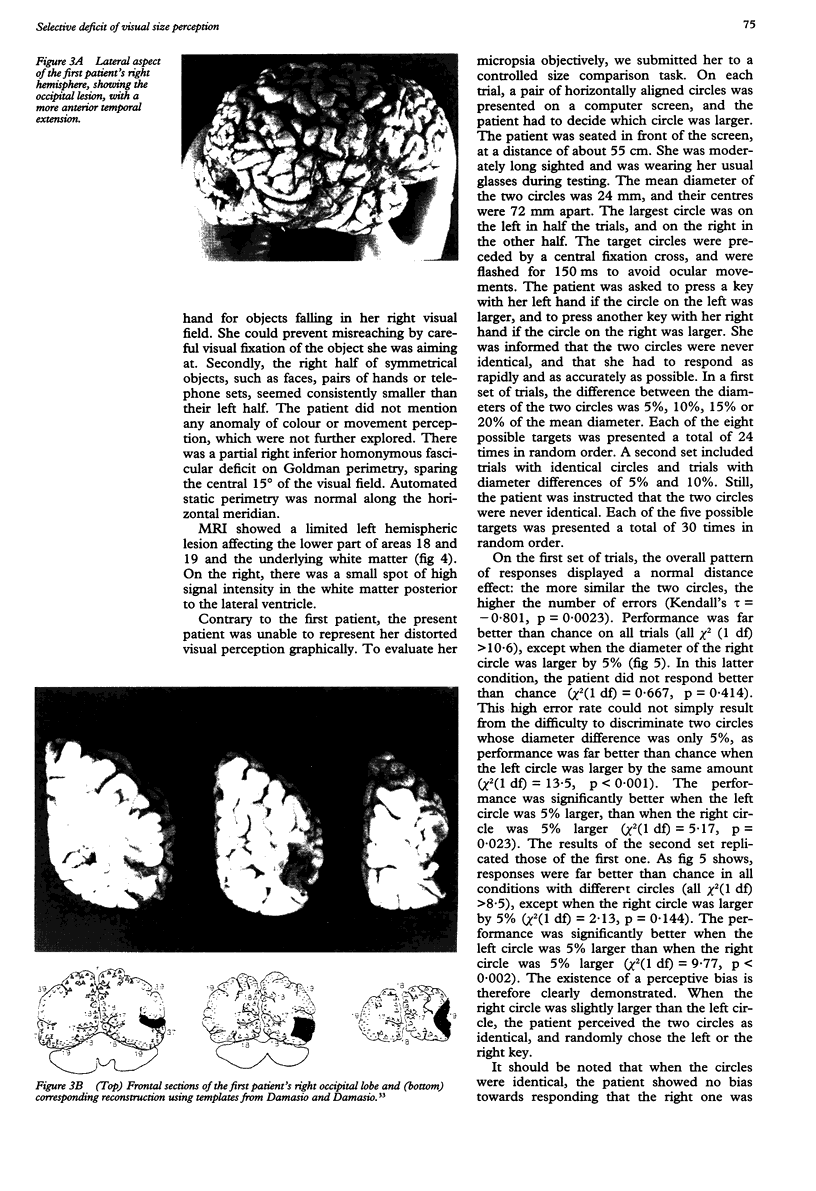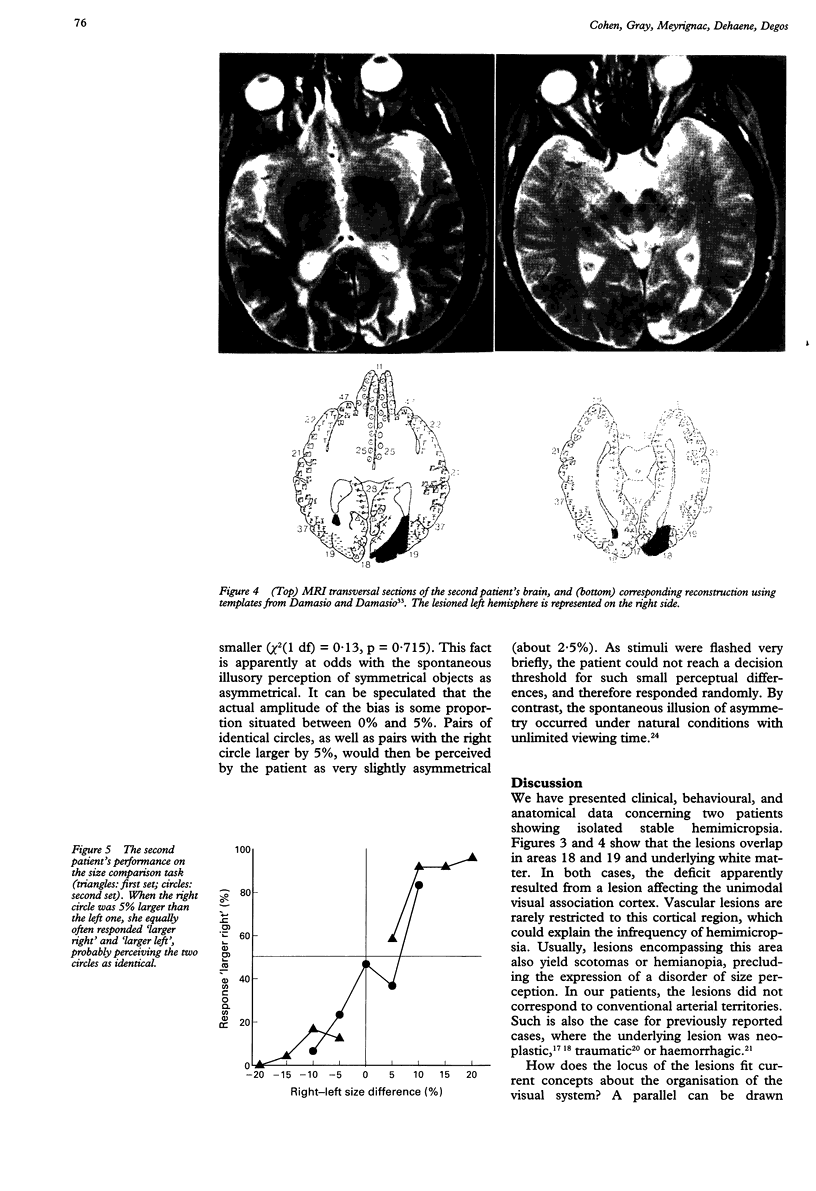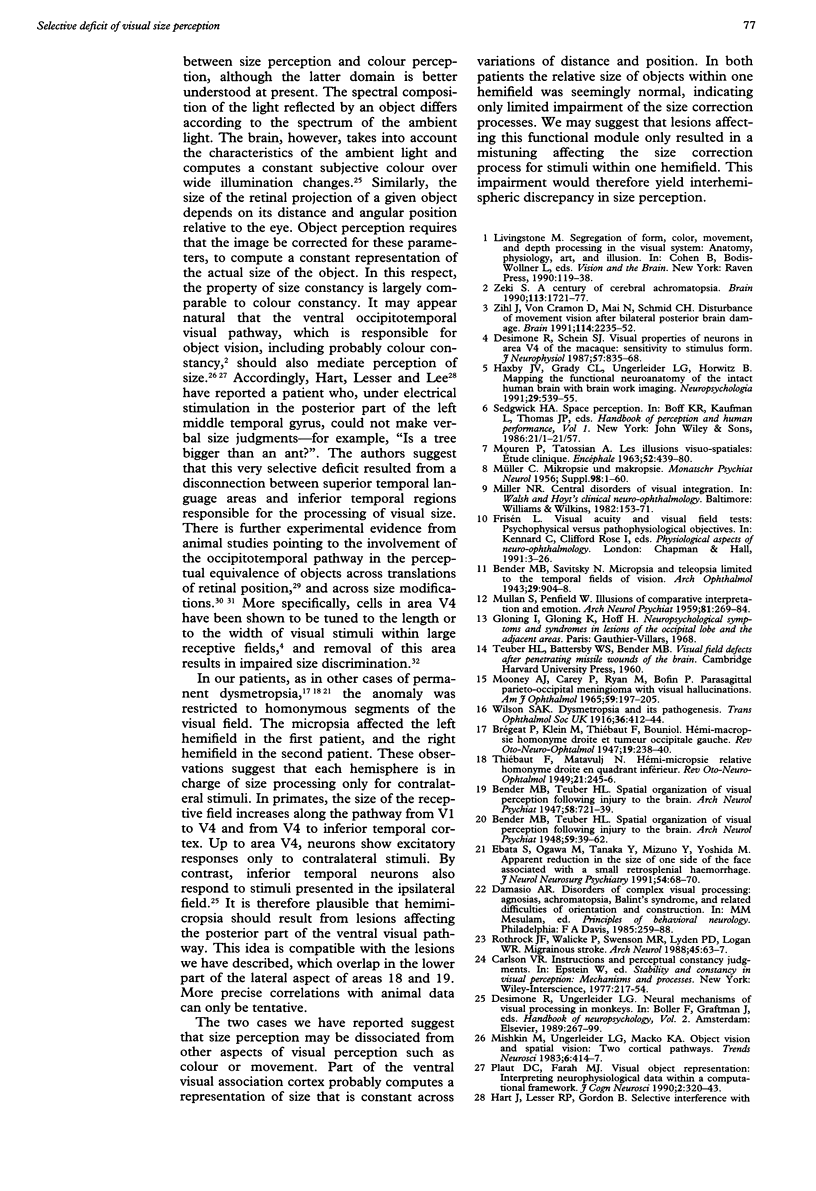Abstract
Hemimicropsia is a rare disorder of visual perception characterized by an apparent reduction of the size of objects when presented in one hemifield. We report two cases of hemimicropsia resulting from focal brain lesions. The first patient was an art teacher and could accurately depict his abnormal visual perception. He subsequently died and his brain was examined post mortem. In the second patient, micropsia was assessed by a quantified size comparison task. The size of a given object is normally perceived as constant across any spatial position. Hemimicropsia may thus be considered a limited violation of the size constancy principle. Behavioural and anatomical data are discussed in relation to the neural basis of visual object perception in humans.
Full text
PDF





Images in this article
Selected References
These references are in PubMed. This may not be the complete list of references from this article.
- Desimone R., Schein S. J. Visual properties of neurons in area V4 of the macaque: sensitivity to stimulus form. J Neurophysiol. 1987 Mar;57(3):835–868. doi: 10.1152/jn.1987.57.3.835. [DOI] [PubMed] [Google Scholar]
- Ebata S., Ogawa M., Tanaka Y., Mizuno Y., Yoshida M. Apparent reduction in the size of one side of the face associated with a small retrosplenial haemorrhage. J Neurol Neurosurg Psychiatry. 1991 Jan;54(1):68–70. doi: 10.1136/jnnp.54.1.68. [DOI] [PMC free article] [PubMed] [Google Scholar]
- Haxby J. V., Grady C. L., Ungerleider L. G., Horwitz B. Mapping the functional neuroanatomy of the intact human brain with brain work imaging. Neuropsychologia. 1991;29(6):539–555. doi: 10.1016/0028-3932(91)90009-w. [DOI] [PubMed] [Google Scholar]
- Livingstone M. Segregation of form, color, movement, and depth processing in the visual system: anatomy, physiology, art, and illusion. Res Publ Assoc Res Nerv Ment Dis. 1990;67:119–138. [PubMed] [Google Scholar]
- MOONEY A. J., CAREY P., RYAN M., BOFIN P. PARASAGITTAL PARIETO-OCCIPITAL MENINGIOMA WITH VISUAL HALLUCINATIONS. Am J Ophthalmol. 1965 Feb;59:197–205. [PubMed] [Google Scholar]
- MOUREN P., TATOSSIAN A. LES ILLUSIONS VISUO-SPATIALES. ETUDE CLINIQUE. Encephale. 1963 Sep-Oct;52:439–CONTD. [PubMed] [Google Scholar]
- MULLAN S., PENFIELD W. Illusions of comparative interpretation and emotion; production by epileptic discharge and by electrical stimulation in the temporal cortex. AMA Arch Neurol Psychiatry. 1959 Mar;81(3):269–284. [PubMed] [Google Scholar]
- MULLER C. Mikropsie und makropsie; eine klinisch-psychopathologische Studie. Bibl Psychiatr Neurol. 1956;(98):1–60. [PubMed] [Google Scholar]
- Rothrock J. F., Walicke P., Swenson M. R., Lyden P. D., Logan W. R. Migrainous stroke. Arch Neurol. 1988 Jan;45(1):63–67. doi: 10.1001/archneur.1988.00520250069023. [DOI] [PubMed] [Google Scholar]
- Schiller P. H., Lee K. The role of the primate extrastriate area V4 in vision. Science. 1991 Mar 8;251(4998):1251–1253. doi: 10.1126/science.2006413. [DOI] [PubMed] [Google Scholar]
- Ungerleider L., Ganz L., Pribram K. H. Size constancy in rhesus monkeys: effects of pulvinar, prestriate, and inferotemporal lesions. Exp Brain Res. 1977 Mar 30;27(3-4):251–269. doi: 10.1007/BF00235502. [DOI] [PubMed] [Google Scholar]
- Weiskrantz L., Saunders R. C. Impairments of visual object transforms in monkeys. Brain. 1984 Dec;107(Pt 4):1033–1072. doi: 10.1093/brain/107.4.1033. [DOI] [PubMed] [Google Scholar]
- Zeki S. A century of cerebral achromatopsia. Brain. 1990 Dec;113(Pt 6):1721–1777. doi: 10.1093/brain/113.6.1721. [DOI] [PubMed] [Google Scholar]
- Zihl J., von Cramon D., Mai N., Schmid C. Disturbance of movement vision after bilateral posterior brain damage. Further evidence and follow up observations. Brain. 1991 Oct;114(Pt 5):2235–2252. doi: 10.1093/brain/114.5.2235. [DOI] [PubMed] [Google Scholar]





